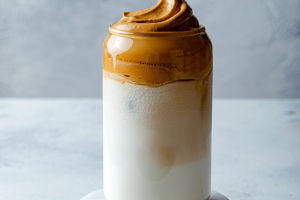Soymilk, a popular plant-based alternative to cow's milk, has gained widespread acceptance due to its nutritional benefits and versatility.
Fresh soymilk, made from soybeans, offers a rich source of protein, vitamins, and minerals while being free of lactose and cholesterol.
However, consuming fresh soymilk safely requires careful attention to preparation, storage, and handling practices to ensure its quality and avoid potential health risks. This essay explores the safest methods for consuming fresh soymilk, focusing on proper preparation, storage techniques, and considerations for maximizing its health benefits.
1. Preparation: Ensuring Quality and Safety
Proper preparation is crucial when making fresh soymilk to ensure its safety and nutritional quality. Here are key steps to follow:
a. Choosing Quality Soybeans: Start with high-quality, non-GMO soybeans. Organic soybeans are recommended to minimize exposure to pesticides and other chemicals. Ensure the beans are fresh and free from mold or damage.
b. Soaking and Rinsing: Soak the soybeans in water for at least 8-12 hours or overnight. This process helps soften the beans, making them easier to blend and extract. After soaking, rinse the beans thoroughly to remove any residual impurities.
c. Blending and Cooking: Blend the soaked soybeans with fresh water to create a smooth mixture. The ratio of soybeans to water can vary, but a common guideline is 1 cup of soaked soybeans to 3 cups of water.
Strain the mixture through a cheesecloth or nut milk bag to separate the soy milk from the soybean pulp (okara). It is essential to cook the soymilk after straining to eliminate the raw bean taste and to neutralize potential anti-nutritional factors.
Boil the soymilk for about 5-10 minutes, stirring frequently to prevent sticking and burning.
d. Hygiene and Cleanliness: Maintain strict hygiene during preparation. Ensure all utensils, containers, and equipment are thoroughly cleaned and sanitized to prevent contamination. This includes washing your hands before handling the soybeans and soymilk.
2. Storage: Maintaining Freshness and Safety
Proper storage is essential to preserve the freshness and safety of fresh soymilk. Here are some best practices:
a. Refrigeration: Fresh soymilk should be refrigerated immediately after preparation. Store it in an airtight container to prevent exposure to air, which can lead to spoilage. Typically, fresh soymilk can be kept in the refrigerator for 3-5 days.
b. Freezing: For longer storage, consider freezing fresh soymilk. Pour it into freezer-safe containers, leaving space for expansion. Thaw frozen soymilk in the refrigerator and shake well before use, as it may separate during freezing.
c. Avoiding Contamination: Always use clean utensils and containers when handling fresh soymilk. Avoid leaving soymilk out at room temperature for extended periods, as this can promote bacterial growth and spoilage.
3. Health Considerations: Maximizing Benefits and Safety
Consuming fresh soymilk safely also involves understanding its health implications and ensuring it complements a balanced diet:
Nutritional Benefits: Fresh soymilk is a good source of plant-based protein, vitamins (such as B vitamins), and minerals (such as calcium and iron). It can be a nutritious addition to a vegetarian or vegan diet.
However, it is important to ensure that soymilk is fortified with calcium and vitamin D, especially if used as a primary milk substitute.


